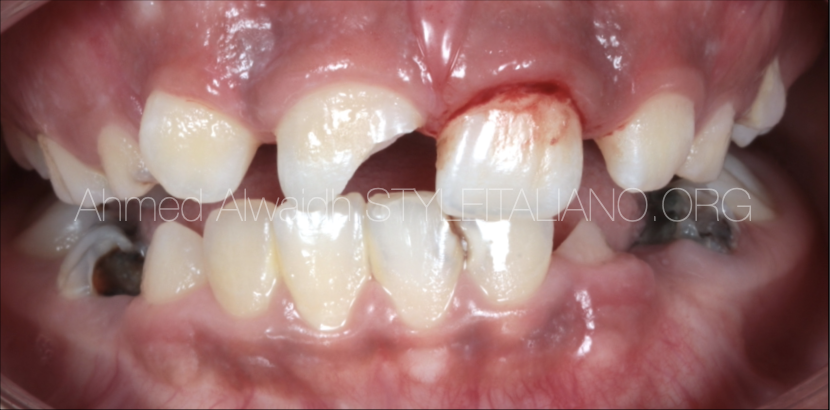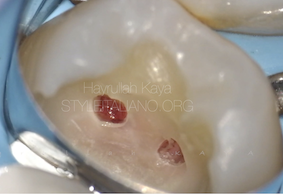
Vital pulp therapy: 2 years follow up
16/05/2024
Hayrullah Kaya
Warning: Undefined variable $post in /var/www/vhosts/styleitaliano-endodontics.org/endodontics.styleitaliano.org/wp-content/plugins/oxygen/component-framework/components/classes/code-block.class.php(133) : eval()'d code on line 2
Warning: Attempt to read property "ID" on null in /var/www/vhosts/styleitaliano-endodontics.org/endodontics.styleitaliano.org/wp-content/plugins/oxygen/component-framework/components/classes/code-block.class.php(133) : eval()'d code on line 2
The aim of direct pulp capping is to promote pulp healing and mineralized tissue barrier formation by placing a dental biomaterial directly over the exposed pulp. In traditional approaches to vital pulp treatments, distinct boundaries were established based on criteria such as the size of pulp exposure, presence of spontaneous pain, and thermal sensitivities. Pulpal exposures exceeding 1 mm or experiencing spontaneous pain, the option of root canal treatment was often made. Recent publications have indicated a shift in favor of vital pulp treatments due to reduced post-operative pain and complications compared to root canal procedures. Additionally, the preference for vital pulp treatments has grown due to concerns about weakened tooth structure and the anatomical root complexities associated with root canal treatments. The limitations of the conventional reversible-irreversible pulp classification have become evident in light of contemporary approaches. In response, a new classification has emerged, encompassing categories like Initial Pulpitis, Mild Pulpitis, Moderate Pulpitis, and Severe Pulpitis. American Association of Endodontics has supported this new classification by explaining that irreversible pulpitis is not a definitive indication for root canal treatment.
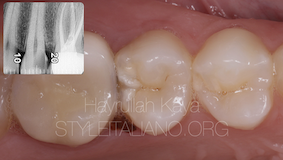
Fig. 1
A 22-year-old adult patient presented to the clinic with a complaint of pain in response to cold and hot stimuli.
Preoperative x-rays showed the presence of deep caries in the maxillary second premolar.
Hypersensitivity on thermal stimulations
Positive percussion
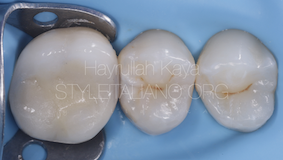
Fig. 2
Rubber dam isolation
Caries removal should be performed using low-speed instruments that exert minimal pressure, aiming to eliminate the carious tissue without causing irreversible damage to the pulp. This consideration holds significant importance for the long-term prognosis of the pulp.
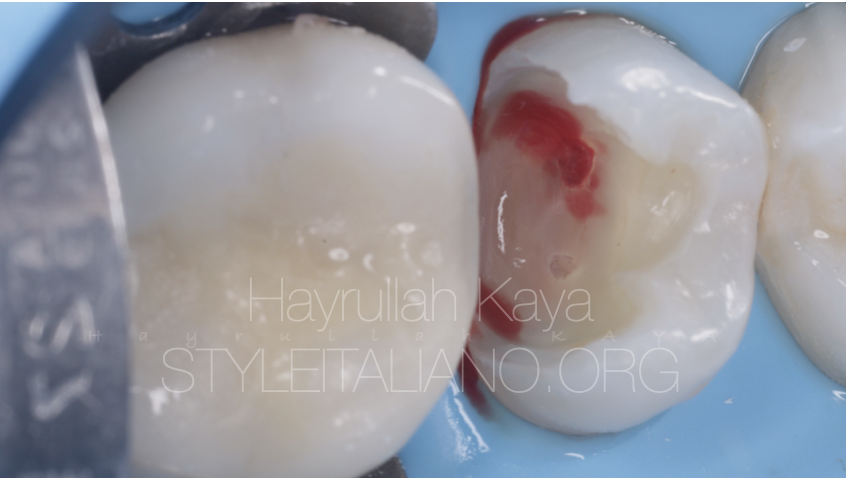
Fig. 3
Observation of pulpal exposure from both the buccal and palatal aspects following caries removal
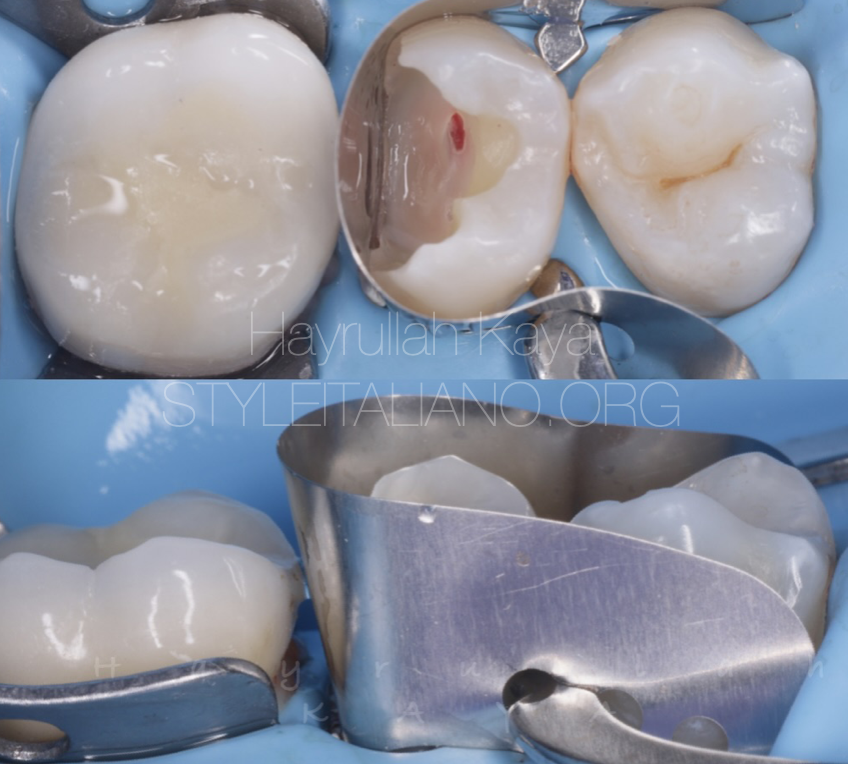
Fig. 4
Placement of ivory matrix band for the purpose of increasing isolation
Bleeding control with sodium hypochlorite
MTA placement with Map One System
It provides significant convenience, particularly in areas where placement is challenging.
The nickel-titanium tip of the Map one system enables easy delivery of MTA to the desired area.
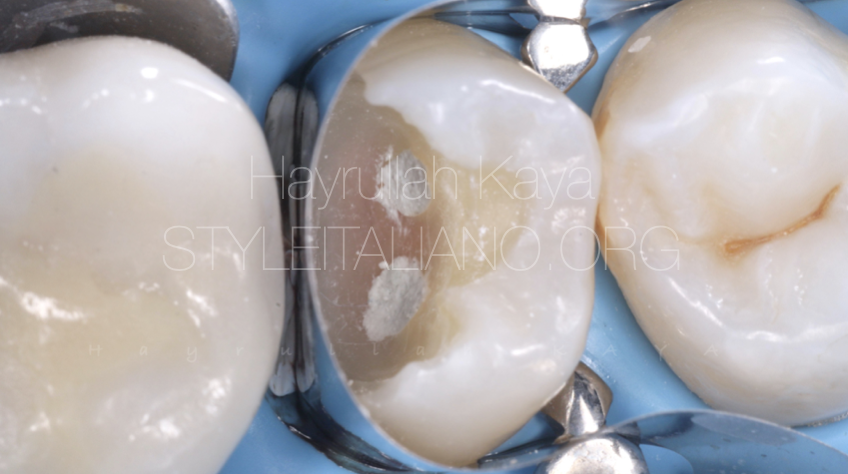
Fig. 5
Covering the exposed pulp with PD White MTA
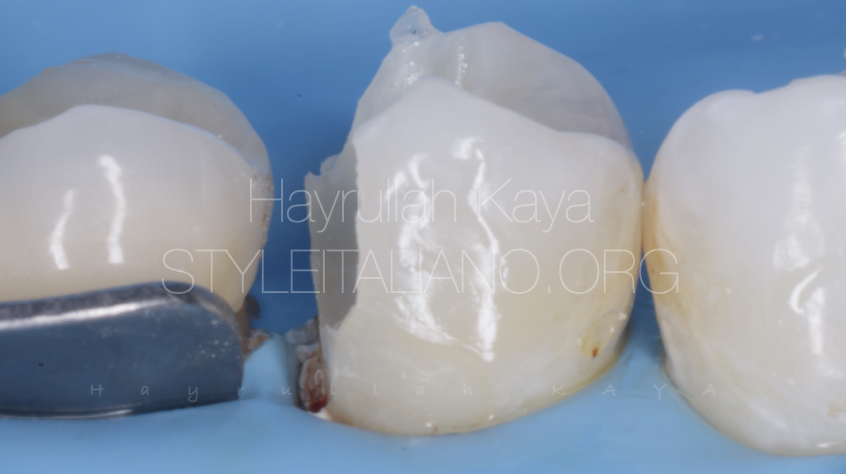
Fig. 6
Elevation of the proximal margin using composite material
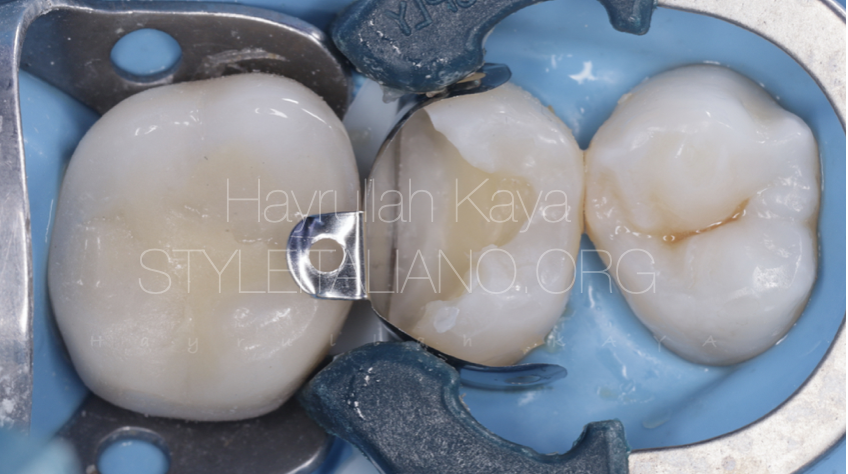
Fig. 7
Placement of sectional matrix system
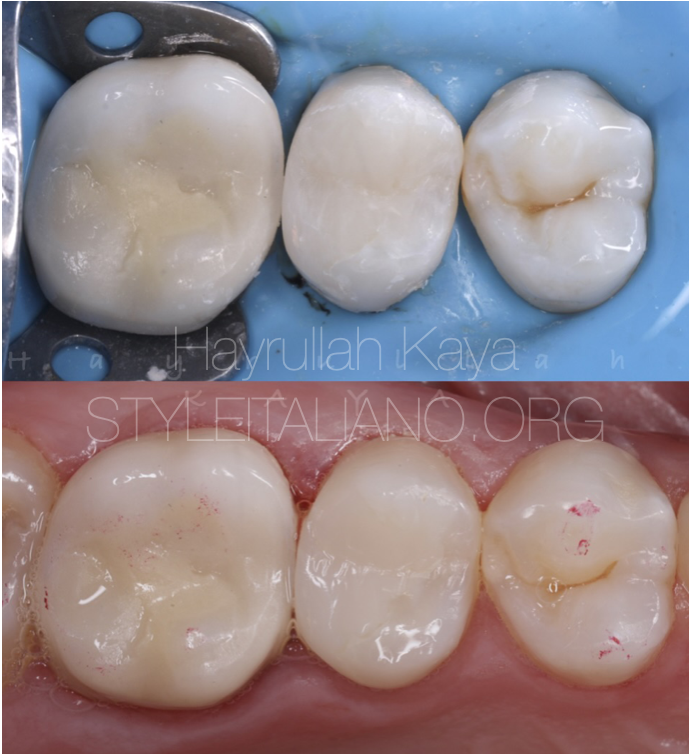
Fig. 8
Composite restoration premolar tooth from occlusal aspect
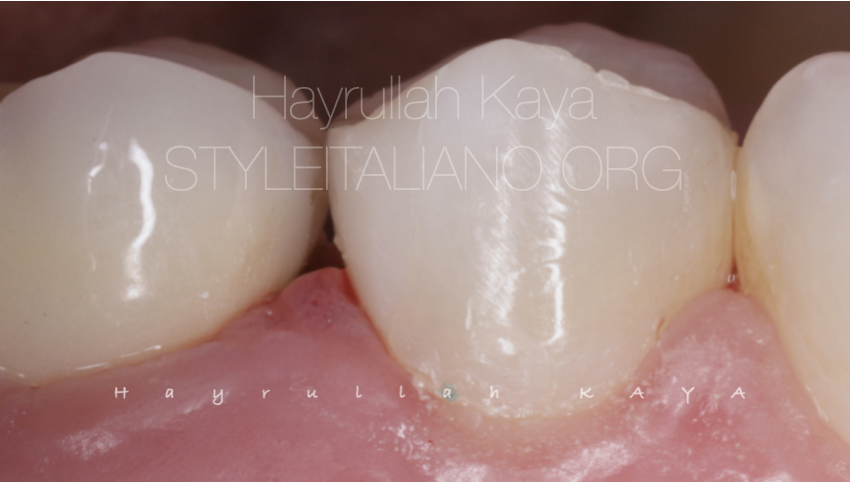
Fig. 9
The emergence profile of the restoration

Fig. 10
2 years follow-up from occlusal aspect

Fig. 11
X-rays taken during the pre-operative, post-operative, 1-year, and 2-year follow-up periods.
Conclusions
Vital pulp treatments eliminate the complications encountered in root canal procedures. Furthermore, the probability of post-operative discomfort is reduced. In cases where the placement of MTA might be challenging, it is recommended to use the MAP One system.
Bibliography
Dissecting dentine-pulp injury and wound healing responses: consequences for regenerative endodontics
Minimally invasive endodontics: a new diagnostic system for assessing pulpits and subsequent treatment needs
A prospective clinical study investigating the effectiveness of partial pulpotomy after relating preoperative symptoms to a new and established classification of pulpits
European Society of Endodontology position statement: Management of deep caries and the exposed pulp (2019) / Duncan, H. F.
Preserving pulp vitality: part two - vital pulp therapies. (2021) / Edwards, D., Stone, S.
Endodonti (2012) / Tayfun Alaçam





